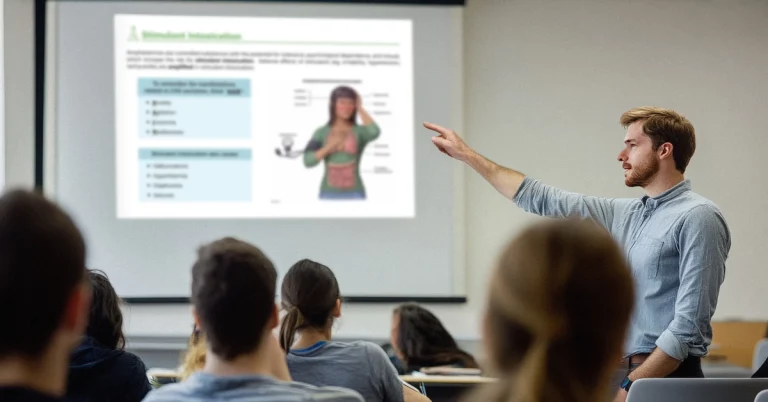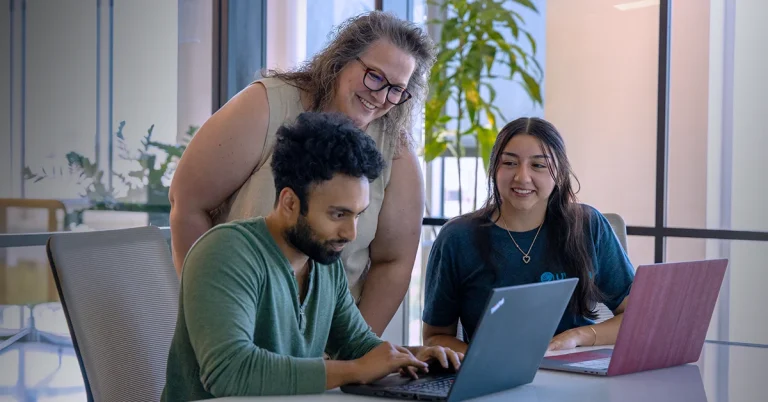Have you ever encountered a patient frustrated because you didn't understand their cultural beliefs about pain management? Or maybe you witnessed a missed communication due to language barriers. In today's diverse healthcare landscape, cultural competence and humility are no longer just buzzwords – they're essential skills for providing high-quality, patient-centered care.
This article explores why cultural competence and humility are crucial for nurses and equips nurse educators with practical strategies to integrate them into the curriculum.
What is Cultural Competence?
Cultural competence involves being knowledgeable about diverse cultures and being empowered to provide care to people from different racial, ethnic, socio-economic, and religious backgrounds; while being respectful of and responsive to their cultural values and beliefs (Report of the 2011 Joint Committee on Health Education and Promotion Terminology, 2012).
Being culturally competent means equipping yourself with knowledge of various cultural practices, customs, traditions, beliefs, and behaviors so that you can adapt, communicate, and provide meaningful care. Culturally competent nurses understand, appreciate, and respect cultural differences and similarities within, among, and between groups (McDaniel, 2021).
Nursing education that embeds cultural competencies into the curriculum teaches students how to deliver appropriate care, in partnership with the interprofessional team, and meet the social, cultural, and linguistic needs of all cultures (AACN, 2023).
What is Cultural Humility?
When the term cultural humility was first introduced over 30 years ago, Tervalon and Murray-Garcia (1998) argued that it was even more important to achieve than cultural competence.
Cultural humility is more than being knowledgeable about other cultures and practices; it involves exploring and critiquing ourselves before learning from and about others. As nurses, we have been challenged to develop cultural humility by becoming more self-aware and overcoming our unconscious and implicit biases that influence how we interact with others (Nolan et al., 2021). Doing this enables us to form true connections with people from diverse populations and act as an ally against racism, discrimination, and oppression.
Developing Cultural Competence and Humility
By the year 2045, Black, Indigenous, and People of Color (BIPOC) will no longer be considered minority populations (Nolan, 2021). According to the American Association of Colleges of Nursing (AACN) report on 2021-2022 Enrollment and Graduations in Baccalaureate and Graduate Programs in Nursing, nursing students from minority backgrounds represented 40.8% of students in entry-level baccalaureate programs, 38.9% of master’s students, 35.5% of students in research-focused doctoral programs, and 38.9% of Doctor of Nursing Practice (DNP) students (AACN, 2023). With these numbers expected to rise, nursing educators must demonstrate cultural competence and humility to effectively teach students from various cultural backgrounds.
But how do we develop and strengthen our skills in cultural competence and cultural humility as nursing educators?
Nursing educators understand that our race and ethnicity could influence our assumptions and ideas about students' beliefs and behaviors and even how they prefer to learn. To enhance our cultural competency, we must begin by reflecting on our own attitudes, biases, perspectives, and ideas of our culture and how they may inform our teaching approach, techniques, and strategies.
Self-reflection is key: Use the CAP method (developed by Lindo & Lam, 2020) as a framework for self-discovery:
| C – Cultural self-study |
Cultural self-study involves evaluating your own cultural identity and exploring how your upbringing is shaped by culture. This type of self-study encourages the educator to develop a deeper understanding of others' perspectives and allows them to contrast/compare, understand, and appreciate other cultures. Ask yourself: What traditions did I participate in that
came from my ethnic culture?
What were my first images of race or
color?
What experiences do I have with people from
other ethnic backgrounds?
How would I describe my desire to learn about
people from other racial or ethnic backgrounds?
How do I teach students from cultures that
are not my own?
|
| A – Acquiring cultural knowledge |
Acquire and learn about other cultures represented in your classroom and how this might influence learning. Learn about different customs, traditions, histories, and social norms of different cultures. By doing so, educators can identify different students’ needs in advance and better understand student behaviors and communication styles. Ask yourself: What do I know? (e.g. sources of
diversity)
What do I notice about my students’ culture,
behavior, and/or personalities?
What do I feel (reflect on your behaviors and
biases)
|
| P – Putting knowledge into practice |
Apply and implement your newly acquired skills, strategies, and pedagogical practices with students from diverse backgrounds. As you integrate your knowledge into the learning context, consider what you: Say (e.g. avoid reinforcing stereotypes)
Use (e.g. implement learning activities that
reflect diverse experiences)
Teach (e.g., acknowledge various cultural
beliefs/practices)
Refer to the section below for more examples |
(Adapted from Lindo & Lam, 2020)
Putting Knowledge into Action
Cultural competence and cultural humility in our nursing classrooms, labs, and clinical settings can look quite different. Here are some practical ways to implement cultural competence and humility in your courses:
- Learn how to pronounce students' names correctly.
- Evaluate your own cultural identity, upbringing, and implicit biases.
- Help students examine attitudes, beliefs, and reactions of others.
- Learn about the cultures of students represented in your classroom.
- Expose students in the clinical setting to a variety of diverse patients.
- Create learning environments that reflect diversity, equity, and justice.
- Develop active learning activities that reflect students’ cultural experiences.
- Support students’ identities and make it safe for them to fully be themselves.
- Use visuals (e.g. images/video) that reflect diverse experiences and cultures.
- Admit that you are seeking to better understand other cultures and traditions.
- Take time to understand students’ cultural traditions, languages, and customs.
- Learn about students as individuals (e.g. ask students how they celebrate special holidays).
- Acknowledge and value students’ experiences and what they bring to the learning process.
(Adapted from AACN, 2008; Lindo & Lam, 2020)
Build a Brighter Future
As the number of BIPOC (Black, Indigenous, and People of Color) students in nursing programs continues to rise, cultural competence and humility become even more critical. By integrating these concepts into your curriculum, you're empowering future nurses to provide culturally sensitive care and build stronger relationships with their patients. Let's work together to prepare the next generation of nurses to thrive in a diverse healthcare landscape.
References
American Association of Colleges of Nursing (AACN). (2023). Enhancing diversity in the nursing workforce [Fact sheet]. Retrieved from https://www.aacnnursing.org/news-data/fact-sheets/enhancing-diversity-in-the-nursing-workforce
American Association of Colleges of Nursing (AACN). (2008). Cultural competency in baccalaureate nursing education. Retrieved from https://www.aacnnursing.org/Education-Resources/Tool-Kits/Cultural-Competency-in-Nursing-Education
Lindo, E. J., & Lim, O. J. (2020). Becoming More Culturally Competent Educators. Perspectives on Language and Literacy, 46(2), 33-38.
McDaniel, V.P. (2021). Cultural Humility in Nursing Building the Bridge to Best Practices. Virginia Nurses Today, 29(2), 1-14.
Nolan, T. S., Alston, A., Choto, R., & Moss, K. O. (2021). Cultural Humility: Retraining and Retooling Nurses to Provide Equitable Cancer Care. Clinical Journal of Oncology Nursing, 25(5), 3–9. https://doi.org/10.1188/21.CJON.S1.3-9
Report of the 2011 Joint Committee on Health Education and Promotion Terminology. (2012). American Journal of Health Education, 43(2), SA, S1-S19. https://doi.org/10.1080/19325037.2012.11008225
Tervalon, M., & Murray-Garcia, J. (1998). Cultural humility versus cultural competence: A critical distinction in defining physician training outcomes in multicultural education. Journal of Health Care for the Poor and Underserved, 9(2), 117-25. https://doi.org/10.1353/hpu.2010.0233










